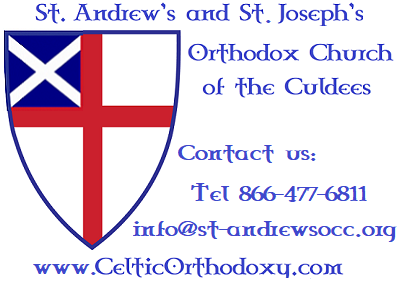Herein you may read a great history on this part of the Irish Celtic (Orthodox Culdee) church. Download free pdf copy of
The Life and Works of St Aengus (the Culdee) Hagiographus by O’Hanlon.
A reprint from https://celtic.press
The book goes in great detail on what is called the Martyrology of Oengus the Culdee or Martyrology of Tallaght. Both of these have been anciently authenticated at least back to the 10th Century. The oldest surviving manuscript of the “Martyrology of Tallaght” is found in a fragment of Áed Ua Crimthainn’s 12th-century Book of Leinster. These ten folios had been separated from the main volume of the Book of Leinster by 1583 and came into the possession of Michael O’Clery in 1627, who then deposited them at the Franciscan friary of Donegal https://en.wikipedia.org/wiki/Martyrology_of_Tallaght
The Martyrology of Tallaght as contemporary with the Martyrology of Oengus, is associated with the Tallaght monastery near Dublin, founded by Maelruain. The Monestary includes the Stowe Missal among its related artifacts. The Stowe Missal, dated to around 797-808, is an early Irish compilation that aimed to list saints from the Roman Calendar, with entries in Latin followed by supplements in Irish.
It also describes the “Saltair na Rann” poems he compiled. It also is useful in a prayer format. The Saltair na Rann narrates the sacred history of the world to the last days of humanity. The oldest copy of it is contained in the manuscript MS Rawlinson B 502, housed in the Bodleian Library at Oxford https://en.wikipedia.org/wiki/Saltair_na_Rann. This manuscript dates back to the 10th century, around the year 988. It is a significant work of early Middle Irish literature, comprising a series of 150 religious cantos.
Ireland’s oldest manuscript is also derived from this school of the Culdees, called the Cathach of St. Columba, which dates back to the 7th century. It contains a Psalter and is one of the earliest examples of Irish writing in the insular majuscule script https://www.isos.dias.ie/articles/timeline_of_irish_manuscripts.html.
The most famous work of St Oengus was his Martyrology. Here is the opening prayer text:
Sanctify, O Christ ! my words:
O Lord of the seven heavens !
Grant me the gift of wisdom,
O Sovereign of the bright sun !
O bright son who dost illuminate
The heavens with all their holiness !
O King who governest the angels !
O Lord of all the people !
Lord of the people,
King all-righteous and good !
May I receive the full benefit
Of praising Thy royal hosts.
Thy royal hosts I praise
Because Thou art my Sovereign ;
I have disposed my mind,
To be constantly beseeching Thee.
I beseech a favour from Thee,
That I be purified from my sins,
Through the peaceful bright-shining flock.
The royal host whom I celebrate.”
http://omniumsanctorumhiberniae.blogspot.com.au/2013/03/saint-oengus-martyrologist-march-11.html
Excerpt from the Martyrology of Oengus, presenting the entries for 1 and 2 January in the form of quatrains of four six-syllabic lines for each day. In this 16th-century copy (MS G10 at the National Library of Ireland) we find pairs of two six-syllabic lines combined into bold lines, amended by glosses and notes that were added by later authors.
The_Life_and_Works_of_Saint_Aengussius_H

